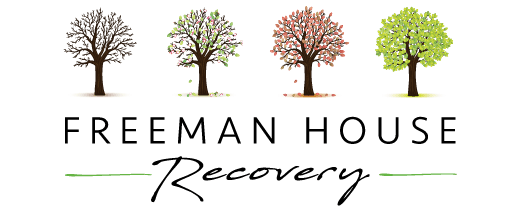Emergence of ketamine in nightlife settings
Origins and early use in club scenes
Ketamine first appeared in underground club scenes as a way to stand out from other party drugs. Club-goers appreciated its short high and perceived lower risk of a bad after-effect. Early adopters would mix ketamine with other substances to extend their experience, but organisers soon noticed health incidents linked to disorientation. Medical teams at major venues began keeping records of cases where people became confused or lost coordination after taking ketamine.
These early reports prompted venue managers to install quiet recovery zones and train staff to spot signs of distress. Despite these measures, word spread among youth that ketamine offered a unique trip. Its reputation as a “clean” alternative to stimulants helped fuel curiosity. DJs and promoters rarely mentioned ketamine by name, yet its use grew steadily as word of mouth passed between groups of friends.
Expansion into festival environments
Festivals provided a new stage for ketamine distribution. Dealers brought small vials and pills that they marketed as a novel experience for weekend events. Many festival goers saw ketamine as a way to change the usual pattern of drug use, seeking something that offered detachment rather than a rush of energy. Health services at festivals recorded rising numbers of attendees reporting bladder pain and confusion after prolonged use over several days.
Festival culture gave ketamine a higher profile, as social media posts showed users in remote fields under strobe lights. Photos of empty vials and pill shells circulated on image boards, drawing attention from newcomers. This visible sharing of experience normalised repeated use, turning a once hidden habit into a common part of the festival routine.
Patterns of youth engagement
Motivations for first use
Young people often try ketamine out of curiosity or a desire to fit in with peers. Some are looking for a break from other party drugs, believing ketamine will not lead to a nasty hangover. Others are drawn by stories of a unique sensory effect that differs from well-known stimulants. Many first encounters happen at friend gatherings or after-parties where someone produces a small amount for others to sample.
Financial factors also play a role. Compared to some designer drugs, ketamine can be cheaper per dose in certain areas. This cost appeal attracts students and young workers on limited budgets. Once a small group tries it, they often pass around what remains of a vial, extending their test of the drug beyond one person and increasing the chance of repeated use.
Influence of peers and social circles
Peer pressure is a strong trigger for continued ketamine use. In groups where one or two members enjoy the effect, others feel urged to try it to share the experience. This sense of inclusion can override concerns about safety or legality. Friends trade advice on dosage and mixing, often leading to situations where newcomers take too much without knowing the limits.
Social circles can also downplay risks. When friends report no immediate harm after use, the group may view ketamine as harmless. This normalises patterns of regular use and makes it harder for individuals to recognise when their habit is slipping into dependency. The loop of encouragement and positive feedback reinforces a cycle that is difficult to break.
Health risks linked to regular use
Immediate physical and mental effects
Ketamine can cause rapid loss of balance, slurred speech and confusion even at moderate doses. Users describe a feeling of detachment that can be unsettling when it happens suddenly in a crowded space. Emergency responders report cases of falls from heights and injuries when people try to walk while disoriented. Medical staff must sometimes sedate patients to keep them safe until the drug’s effects wear off.
Mental confusion can persist for hours after the initial high. Some users experience panic or fear when they come down too quickly. This crash can lead to reckless behaviour as individuals attempt to regain control through more drug use or alcohol. Such mixing increases the risk of overdose and puts further strain on emergency services.
Long term harm to bladder function and memory
Repeated ketamine use over weeks can lead to serious bladder issues. Users often develop painful urination, urges to go frequently and sometimes blood in their urine. If left untreated, these symptoms can become chronic, with some users requiring surgery to repair damage. Hospitals have seen more young people in their twenties undergoing procedures to treat bladder lining damage.
Memory loss and cognitive decline also emerge after months of frequent use. Individuals report gaps in their short-term memory and difficulty focusing on daily tasks. This hampers academic performance and work productivity, leading some to drop out of courses or lose jobs. The combination of physical pain and mental strain drives many into isolation, making recovery harder.
Impact on mental wellbeing
Anxiety and mood swings after use
When ketamine leaves the system, users can feel anxious and experience sudden mood changes. Some describe a hollow feeling or sadness that comes on without warning. This emotional crash drives many back to ketamine in an attempt to stabilise their mood, creating a cycle of use and withdrawal.
Clinical teams note that repeated highs and crashes damage brain chemistry. This can lead to longer periods of anxiety and irritability even when the person is not using. Friends and family often struggle to support individuals whose mood swings become unpredictable or intense.
Signs of tolerance and dependence
Tolerance develops quickly with ketamine. Users find they need higher doses to achieve the same effect, pushing them toward riskier consumption. When tolerance rises, so does the chance of bladder harm and cognitive issues. Dependence follows as people fear returning to the discomfort of withdrawal and mood crashes.
Dependence can be physical and psychological. Users report cravings and spend more time planning around their next dose. Social activities become focused on sourcing and using the drug rather than other interests. This shift in priorities signals that youth have moved beyond recreational use into addiction.
Role of online communities
Advice shared in chat groups and forums
Online spaces have become hubs for sharing tips on sourcing, dosing and mixing ketamine with other substances. Enthusiast groups post guides that claim to reduce harm, but often lack scientific backing. Users feel reassured by peer endorsements and follow advice without checking its accuracy. Health services warn that reliance on unverified online content can worsen outcomes.
Forums also serve as platforms for bragging about high tolerance and daring consumption patterns. This competitive tone pushes others to match those feats, even when it means ignoring safety. Moderators try to remove posts promoting dangerous behaviour, but new threads appear quickly, making moderation a constant effort.
Spread of inaccurate dosing information
Many online guides recommend doses based on weight or experience level, but often use vague terms like “small” or “strong.” Without clear definitions, users may misjudge the correct amount. Reports of overdoses linked to single-session high doses have doubled in some regions over the past two years.
Attempts to introduce verified harm reduction posts meet resistance from users who distrust official voices. When health experts post guidelines, they are sometimes flagged as alarmist. The challenge is to create trust channels that reach youth on their preferred platforms without appearing to judge or criminalise.
Legal status and enforcement
Classification under UK law and penalties
Ketamine is a Class B drug in the UK, carrying potential prison terms of up to five years for possession and 14 years for supply. These penalties reflect the recognised harm profile and rising misuse among youth. Despite this, many users remain unaware of the specific legal risks, assuming that ketamine is safer than other substances.
Courts have started offering diversion programmes for first-time offenders, steering them toward education instead of jail. These schemes aim to reduce reoffending by focusing on the causes of misuse. Early reports suggest lower repeat offence rates, but long-term data is still being gathered.
Challenges faced by policing units
Police struggle to keep pace with changing supply methods. Small shipments through courier services and encrypted messaging apps make tracking difficult. Local forces have increased training for officers to identify ketamine-related offences and collaborate with postal services to intercept packages.
Budget constraints limit the number of dedicated drugs officers, so some areas rely on general patrol teams to spot signs of ketamine use at events. This mixed approach can miss smaller gatherings and private parties where distribution goes unchecked. Stronger partnerships between local councils, health services and law enforcement are seen as key to more effective action.
Treatment pathways and recovery options
Steps in detox and therapy programmes
Effective treatment begins with a supervised detox to manage withdrawal symptoms like sweating, tremors and anxiety. Once the body clears the drug, structured therapy supports mental health recovery and addresses underlying triggers. Therapists guide youth through coping strategies and help rebuild routines without ketamine.
After initial therapy, ongoing support groups and individual counselling sessions reinforce positive change. Some choose residential recovery stays where they can focus on healing without outside pressures. Peer-led meetings provide a safe space for sharing experiences and learning from others who have recovered.
Common barriers to seeking help
Stigma and fear of judgment often stop young people from asking for support. Many worry that admitting addiction will damage relationships or academic prospects. Others believe they can manage withdrawal on their own, delaying professional help until symptoms become severe.
Waiting lists for public services can stretch for months, leading some to avoid formal routes altogether. Cost is another hurdle, as private options may be unaffordable. This gap drives demand for free online resources, though those cannot replace face-to-face care for many. Simplifying referral paths and expanding funding for youth-focused recovery services could help bridge this divide.
Influence on youth culture
Shifts in event line-ups and music trends
As ketamine became more visible, some promoters added quieter chill zones and focused on ambient music sets that suit its effects. DJs adapted their song choices to match slower, trance-like rhythms, creating spaces where users felt comfortable floating through the crowd. These tailored experiences drew in new audiences but also reinforced ketamine’s role in shaping event culture.
Music streaming services have noticed playlists tagged with terms linked to ketamine experiences. This signals that the drug is influencing listening habits beyond live events. Curators must weigh the ethics of including tracks that reference ketamine, as some feel it normalises use among unsuspecting listeners.
Ways media portrayals normalise use
Film and TV shows set in club environments sometimes depict ketamine use without showing real consequences. Characters may drop ketamine in an upbeat montage, then move on without addressing health issues. These portrayals shape perceptions, especially when youth see stars using ketamine as part of their social life.
Music videos and influencer posts can glamorise ketamine by showing stylised visuals of glow sticks and neon lights. This glam image hides the darker side of addiction and makes it harder for youth to grasp the real risks. Media literacy programmes could teach young viewers to question how substance use is shown on screen.
Prevention efforts in education
School-based awareness programmes
Some schools run workshops where health educators explain the physical and mental effects of ketamine. Interactive sessions encourage students to ask questions in a safe space. Early feedback shows that honest discussions about harm resonate more than scare tactics.
Peer mentoring schemes also help. Trained students share their stories and guide classmates toward healthy choices. Hearing from people closer in age makes the message feel relevant and real. These programmes rely on support from local health authorities to train mentors and provide resource materials.
Role of family and community support
Families play a key part in prevention by keeping lines of communication open. Parents who talk about the realities of drug use without anger or blame are more likely to be heard. Community centres that offer youth clubs and sports activities give young people positive outlets for energy and socialising.
Local faith groups and charities often run free youth drop-ins where advice is available. Staff can spot early signs of drug use and refer individuals to specialist services. This network of support helps catch issues before they spiral into crisis.
Future outlook and data monitoring
Trends in hospital admissions and surveys
Recent national surveys track a steady rise in ketamine-related hospital visits, mainly for bladder damage and mental health crises. These figures guide funding and policy decisions. Researchers note spikes following large festivals and holidays, suggesting that event season plays a major role in patterns of use.
Ongoing data collection through emergency departments, community health teams and youth outreach projects offers a fuller picture of behaviour. Consistent reporting methods help compare regions and spot new hotspots.
Gaps in research and need for long-term studies
While short-term impacts are clear, there is limited data on life outcomes for youth who stop using ketamine in early adulthood. Long-term studies could show how early intervention and support shape future health and social prospects. More research is also needed on effective education strategies that stick with young people beyond a single school visit.
Filling these research gaps would let policy makers and health services fine-tune responses and allocate budgets where they can have the biggest effect. Clear evidence of what works could shift the approach from reactive to proactive, focusing on keeping youth safe before serious harm takes hold.










